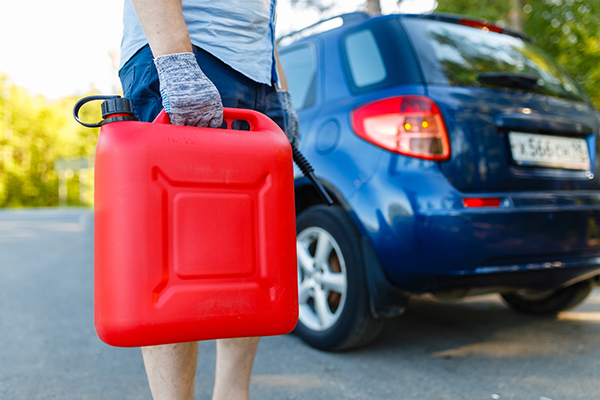Prepping hacks: 3 Tried-and-true ways to siphon gas from a car
11/17/2019 / By Darnel Fernandez

Sometimes, staying put isn’t the best course of action when SHTF. In this case, you should be ready to evacuate in your bug-out vehicle to reach a safer location. However, problems like running out of gas can happen, especially if you neglect to stock up on extra fuel canisters. This is where the skill of siphoning gas comes into play. (h/t to ThePreppingGuide.com)
Can’t step on the gas if you can’t siphon it
Under normal circumstances, running low on gasoline is a minor inconvenience. There are plenty of gas stations along long stretches of highway to keep you topped up when going on a long journey, or you can call for roadside assistance if you are stuck in the middle of the road. Unfortunately, these services may no longer be available when SHTF. This is why learning how to siphon gas is an invaluable survival skill. (Related: Basic mechanical skills every survivalist should have.)
One thing to take note is that it may be more difficult to get gas from modern cars because these models tend to have electronic locking mechanisms on the gas tank. They also have rollover safety features that are used to prevent gas leakage after an accident.
There are many ways to siphon gas from a car, but all of them use the same principles. They need the right amount of air pressure, gravity, and liquid cohesion to get the fuel out of the tank. Some methods can be done manually while others need the help of specialized tools, like pumps. But when SHTF, you may not always have the tools you need and may have to use whatever you can find in the immediate area. Still, it’s better to include a gas siphon pump when preparing your bug-out bag (BOB).
Here are three methods you can use to siphon gas out of a car.
Use a siphon pump
This is, by far, the safest and easiest method, so it pays to have a siphon pump somewhere in case of an emergency. These pumps are affordable and not too bulky, making them a worthy addition to your car BOB.
Using a siphon pump isn’t too difficult. Place a gas canister or any similar container on the ground directly below the gas tank. Then, insert one end of the pump’s tubing into the container, and the other end into the gas tank. Most pumps have a specific mechanism that allows you to get gas out of the tank and into the container. Some have bulbs that you can squeeze to force the flow of gas while others work similarly to a plunger, creating suction that sucks the gas out of the tank.
Once you have the desired amount of gas, raise the container above the gas tank to let any excess liquid flow back toward the car.
Add pressure to the tank
In this method, you can use manual suction or your mouth to siphon the gas. Set up the gas canister like in the previous method, then create a loop in the tubing to manage the flow of gas. Take the other end of the tubing and carefully suck the gas out of the tank. Once the gas starts flowing toward the loop you created, remove the tubing from your mouth and put the other end into the container to allow it to flow downward.
While this method is effective at siphoning gas, it is not recommended unless you have run out of options. Ingesting gasoline could lead to poisoning, which has long-lasting negative health effects.
Siphon from modern cars
Aside from advanced safety features, modern cars also have anti-siphoning filters built directly into the gas tank. These filters have a metal flap that shuts automatically if someone tries to shove a hose down the pipe. To siphon gas from modern cars, you can still use either one of the previous two methods to get the same result. The only thing you need is an object or tool strong enough to hold the metal flap open until you get the gas you need. You may want to avoid using metal objects like screwdrivers that could make unwanted sparks.
Learning how to siphon gas is a must, especially if you plan to bug out in your car. Learn more survival skills while on the road at Bugout.news.
Sources include:
Tagged Under: bug out, cars, gasoline, how-to, off grid, preparedness, prepping, self-reliance, SHTF, siphoning gas, survival, survival gear, survival skills, survivalist
RECENT NEWS & ARTICLES
SHTF.News is a fact-based public education website published by SHTF News Features, LLC.
All content copyright © 2018 by SHTF News Features, LLC.
Contact Us with Tips or Corrections
All trademarks, registered trademarks and servicemarks mentioned on this site are the property of their respective owners.



















